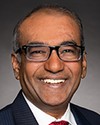Thank you, Mr. Chair.
I will go through this quickly and just hit the highlights. Thank you for the opportunity.
I've already covered the material on slide 2, so I'm going to start on page 3 of the presentation.
Just to give you a sense of what is in the Public Accounts of Canada, we have broken this down for you in a pie chart of where expenses are happening as well as the assets held by the government. There are three big buckets here for us.
The biggest one is departments and agencies. That represents $272.2 billion in spending and expenses during the fiscal year. The other two you'll see here relate to crown corporations. On the upper left you'll see something called “Enterprise Crown Corporations”. Those are organizations like Canada Mortgage and Housing Corporation and Export Development Canada that are basically self-sustaining. The final bucket, which is a smaller one with expenses of $8.3 billion, relates to crown corporations such as museums, CBC, and VIA Rail.
The reason we've split those for you is to give you a sense of the spending; but also we account for those things differently. We account for the organizations, or the crowns, that are self-sufficient as assets. If you look in the public accounts statement of financial position—or balance sheet, if you are from the private sector—you would see the crown corporations like CMHC rolled up into an investment line. I wanted to highlight that for you.
On the next page, we see that the government's fiscal year begins on April 1 of each year and ends on March 31. As I already mentioned, today, we are looking at the public accounts for the year that ended on March 31, 2015.
I want to give you a sense of the government's financial reporting cycle. If you feel like you're in three fiscal years at once, you're understanding what's happening. We are wrapping up the year-end at March 31, 2015. This is the final piece of that. The public accounts were tabled back in the fall, but the public accounts committee's study of those is important. We are now in the process, with our colleagues from the Auditor General, of getting ready for the audit for the year that just ended March 31, 2016. At the same time, Parliament has already seen a budget, the main estimates, and supplementary estimates (A) for the current fiscal year, the year that started March 31, 2016. There are three things going on at once.
Perhaps you are wondering why it takes several months to prepare the government's financial statements. It is important to understand that the fiscal year ends on March 31.
We table the public accounts in the fall.
We have a good sense of expenses several months after year-end, but nailing down the revenue numbers is what takes the longest, and it's because our friends at the Canada Revenue Agency have to process a certain number of tax returns before we can get a good estimate. We also have to give our colleagues at the Auditor General's office some time to go through that information and properly audit us.
The other piece, of course, is that we do wait until Parliament is sitting before we table the Public Accounts of Canada.
Look at page 5 for roles and responsibilities, because they are a little confusing. It is a team effort, as I mentioned earlier. The Receiver General, which is part of what used to be called Public Works and Government Services Canada, and is now Public Services and Procurement, compiles the data. They run the systems that produce these things, and they're responsible for the printing of the documents.
The Office of the Comptroller General takes care of the government's accounting policies
in terms of what the standards are, how to interpret them, and preparing the note disclosure for the financial statements.
The Department of Finance—and as I mentioned, Mr. Leswick is here—is responsible for section 1, which is the overview discussion and analysis of the financial results.
Those are the three organizations involved in the preparation.
The Auditor General's office is responsible for giving an audit opinion on those financial statements themselves.
Maybe we'll wrap up with slide 6, because I don't think there's any point in going through the numbers. We'll get to those later. There are three volumes, as was mentioned.
Volume 1 is the consolidated financial statements of the Government of Canada. What that means is that it's a statement of financial operations, which is what some older people would call an income statement. It's revenues and expenses. You will see a statement of financial position, which some of us from the private sector many years ago would call a balance sheet. That means assets and liabilities. We're like the private sector in that regard. You'll also see a statement of net debt and a statement of cash flow. That's what the Auditor General audits.
Volume 2 is where we get back to Parliament and tell them how much money it voted for each department and how much was spent. Volume 2 relates back to the estimates. It's where Parliament gets a chance to see what was voted, how much was spent, and what gets carried forward.
Volume 3 is the volume 1 mentioned in my opening remarks, which is the volume you will not see anywhere in the private sector, where we have additional disclosures and information that is out there for your information.
I think with that we'll wrap it up. I want to flag for you there is some technical language here. At the end of this presentation, we do have a series of definitions that may help you if you're looking for technical terms. Before that, we have some financial highlights to focus your attention. One point you will notice is that there is a budget that we compare to the financial results achieved, both the initial budget that was tabled as well as the results achieved the year before. That's for the expenses and revenues. It give you a sense of what the budget was and what the actuals were. Then we have information on assets and liabilities. You'll notice that there is no budget for those. It's just the results. The budget numbers are only relevant for revenues and expenses, and not for assets and liabilities.
I will stop there, Mr. Chair.
I would be pleased to answer any questions the committee members may have.






